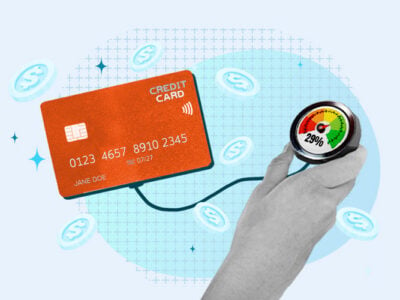If you have a medical bill that was sent to collections, you’re not alone. The majority (58%) of debts pursued by third-party debt collection agencies are overdue medical bills, and in June 2021, the total amount of medical debt in the US had reached a staggering $88 billion. 1
If you have a medical collection account on your credit report, it could be damaging your credit score. Thankfully, there are ways you can remove medical collections from your report. Here’s an overview of each method so that you can figure out which one is right for you.
Table of Contents
1. File a credit dispute
If you see a medical collection account on your credit report, the first thing to do is to check whether the debt contains any inaccurate information. If the medical debt is invalid (i.e., it isn’t yours or your health insurance company has paid it), then you should dispute the account.
You should also dispute the debt if it’s less than 1 year old. Medical bills aren’t supposed to affect your credit score or appear on your credit report at all until they’ve been in collections for 12 months (1 year).
Follow these three steps to dispute medical collections on your credit report:
Gather evidence
Make sure you have supporting evidence that proves the medical collection account on your credit report is an error. Documents such as receipts, billing statements, and payment records from your health insurance company are all helpful.
Send a dispute letter to the credit bureaus
Once you have your supporting documents ready, use the letter template below to dispute the medical collection with the credit bureaus reporting the error (TransUnion, Equifax, and/or Experian). Specify what the error is and ask them to remove it.

Medical Collection Dispute Letter to Credit Bureau
Use this sample letter for disputing medical bills to dispute an invalid medical collection account with one of the three main credit bureaus that produce your credit reports (Experian, Equifax, or TransUnion).
Where to Send Your Dispute Letter
| Experian | Equifax | TransUnion | |
|---|---|---|---|
| Where to send your dispute letter | Experian P.O. Box 4500 Allen, TX 75013 | Equifax P.O. Box 740256 Atlanta, GA 30374-0256 | TransUnion Consumer Solutions P.O. Box 2000 Chester, PA 19016-2000 |
| What you’ll need to send | |||
| Dispute online | Experian's online dispute form | Equifax’s online dispute form | TransUnion’s online dispute form |
Check your credit report for a status update
Once you’ve filed your dispute, your debt collector will have to verify the medical collection account within 30–45 days. 2 If they can’t provide proof that the information is accurate, then the credit bureaus must delete it from your credit reports in accordance with the Fair Credit Reporting Act (FCRA). 3
2. Pay off your medical collection
Paying off your medical debt is the simplest way to get it off your credit report, if you can afford to do so. Per an update made by the credit bureaus in July 2022, paid medical collections no longer appear on your credit reports. 4
Paid collection accounts (of all types) also don’t affect your credit score in the newest credit scoring models (i.e., FICO 9, VantageScore 3.0, and all subsequent models).
3. Bring your medical debt below $500
If you’re unable to pay off all of your medical debt, try to pay it down until it amounts to less than $500. Medical collections under this amount will be removed from consumer credit reports after January 1, 2023. 4
4. Ask your health insurance company to pay the debt
The credit bureaus automatically delete medical collections from credit reports if they’ve been covered by insurance. 5 Check with your health insurance company to see if the medical bill is a covered expense that they overlooked.
5. Settle your medical debt with pay for delete
Pay for delete is a negotiation strategy where you offer to pay off a debt in exchange for having the associated negative item removed from your credit report.
Because paid medical collections no longer appear on credit reports at all, this strategy is overkill if you’re planning on paying in full. However, it can still be worth proposing pay-for-delete if you’re planning on arranging a debt settlement, aka a partial payment.
To use pay for delete when settling your medical debt, send your debt collector a customized pay-for-delete letter asking them to provide written confirmation that they’ll delete your medical collection from your credit report once you pay the agreed amount.
This approach is most likely to work if your debt collector thinks there’s only a small chance that you’ll pay the debt otherwise, such as if the debt is very old or very large.

Pay for Delete Letter to Collector
Use this pay for delete letter template to ask a debt collection agency to remove a collection account from your credit report. Pay for delete works best on old debts in collection, so this is the scenario the strategy is most suited to.
6. Hire a credit repair company
If you’re struggling to remove a medical collection account from your credit report on your own, hiring a credit repair company might alleviate your situation.
However, bear in mind that even though their expertise may save you time and reduce stress, there’s nothing that a credit repair company can do for you that you can’t do to remove negative items from your credit report by yourself for free. Also, if you go this route, be on the lookout for scammers, since not all companies in the credit repair industry are legitimate.
Why do medical bills appear on your credit report?
If you just want to delete a medical collection from your credit report, the methods outlined above are enough. However, if you want to prevent this problem from cropping up again, you need to understand how and why medical bills appear on your credit history in the first place.
Medical bills aren’t the same as credit accounts because they don’t normally show up on your credit report at all, regardless of whether you pay them late or on time. This is because healthcare providers aren’t “data furnishers,” which means that they don’t provide data to the credit bureaus that create your credit reports.
However, most debt collectors are data furnishers. If your provider thinks you won’t pay your medical bill, they may send it to a third-party company (a debt collection agency) that will report it, at which point it will show up on your credit report as a new collection account.
Why medical collections don’t appear on your report right away
If you’re wondering why you’re only just now seeing a medical bill from a long time ago, it’s because there’s a year-long waiting period before unpaid medical debt shows up on credit reports (formerly 6 months—the credit bureaus changed this on July 1, 2022). 4 Additionally, medical bills are sometimes sent to collections without notice, meaning that these collections could come as a surprise.
If you take steps to “delete” a medical collection account in this grace period (e.g., by paying it), it will never appear on your credit report in the first place.
Takeaway: Paying medical collections will get them off your credit report, though there are alternatives if you can’t pay.
- As of July 1, 2022, paid medical collections no longer appear on consumer credit reports. This means you can simply pay your debt to get it off your report.
- If your medical collections contain inaccurate information, then you may be able to get them removed by filing a credit dispute.
- You may also be able to delete unpaid medical collections by getting the bill covered by health insurance, negotiating with your debt collector, or hiring a credit repair expert.







